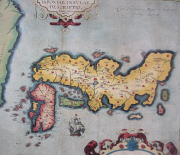 The Silk Road dates back to
ancient times. The Romans were fond of silk imported from China. One Roman
Emperor even placed a ban on people wearing silk because it was believed to be
excessive and decadent.
The Silk Road dates back to
ancient times. The Romans were fond of silk imported from China. One Roman
Emperor even placed a ban on people wearing silk because it was believed to be
excessive and decadent.In China, silk production was a closely guarded state secret. Exporting
silk, and especially the treasured silk worm without government approval,
was a capital offense.
This brought the whole world to China via the Silk Road.

Not only were the materials
themselves exchanged, but also weaving procedures, looms, and patterns.Today we
know that many traditional Japanese patterns were adopted from their Persian
counterparts at the end of the Silk Road.
◆What is Zipangu?◆


Obi is the decorative sash or belt worn with
Japanese kimono. Chinese silk fabric was imported to Japan in the 5th century.
By the 15th century, Japan's Muromachi Period, simple and functional
Kosode clothing was developed. Kosode were accompanied by 6 cm wide obi belts. It
is the predecessor of today's Japanese kimono and obi.
From the 17th century, Japan's Edo
Period, kimono and obi became more and more beautiful. Japan had just finished
a long civil war and was in its most peaceful and prosperous period. All of
Japan's fine arts were fully developed, and artisans began to gain fame and
respect. The kimono belt, obi, became a beautiful art object. It was no longer
a part of the kimono, but an item of art in itself. The obi's length and width
grew, up to 34 cm wide. The hand painted kimono designs and woven patterns of
obi also became more extravagant. They were popular accessories for Kabuki
actors, young girls, courtesans, and geisha.
 Today, the obi is the most decorative and expensive part of the kimono.It
can be worn in dozens of ways. Some knots are appropriate for certain occasions,
some are for young girls, and some are for weddings. The obi is a national
treasure of Japan.
Today, the obi is the most decorative and expensive part of the kimono.It
can be worn in dozens of ways. Some knots are appropriate for certain occasions,
some are for young girls, and some are for weddings. The obi is a national
treasure of Japan.